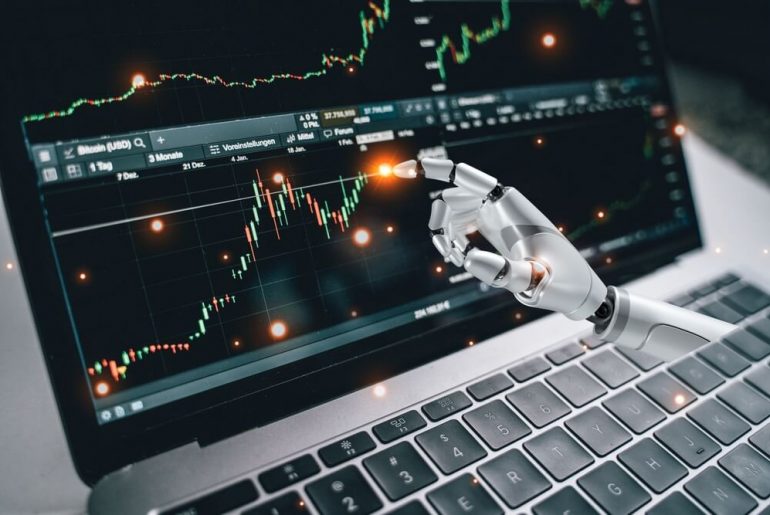Algorithmic trading with Forex trading robots has become increasingly popular. These automated systems are designed to allow market participants to skip part of trading routines and focus on a strategic aspect. In this guide, traders will find more information about the basics of algorithmic trading, some tools used to create Forex trading robots, and the benefits of using such an approach in trading.
How Do Trading Robots Work?
Algorithmic trading is based on Forex trading robots, special software designed by traders to partly automate their trading routines. Such bots are rules and commands executed by MetaTrader 5 and MetaTrader 4 trading robots (or bots intended for other platforms) in a determined order.
The idea is to automate opening trades based on various trading indicators. Once a signal comes from a technical analysis tool, the order is sent to the platform. Also, modern trading robots for MT5, MT4, and other platforms allow traders to set stop loss and take profit orders.
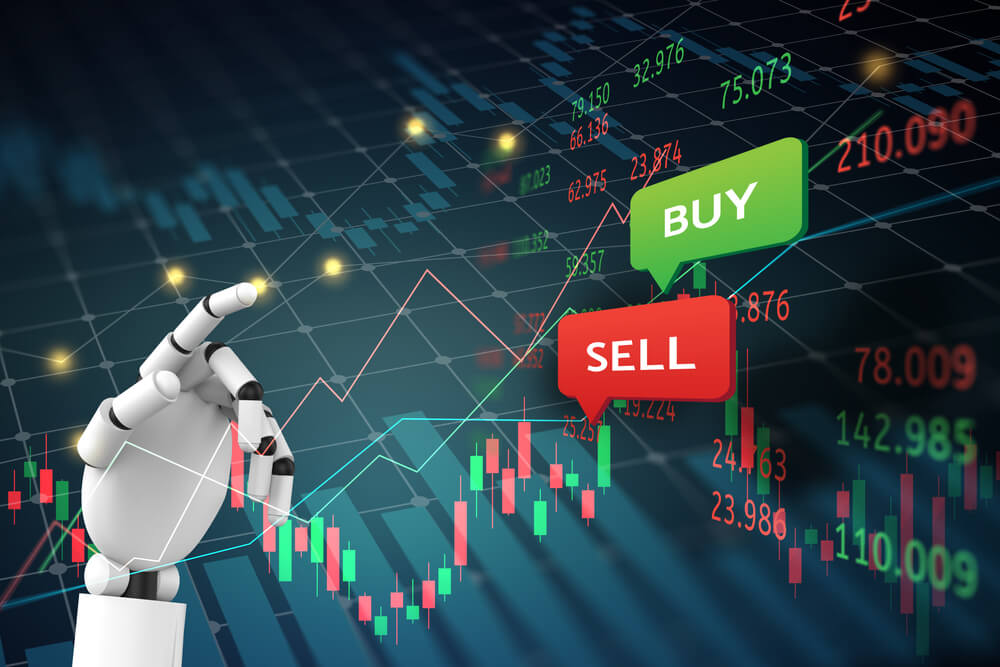
Forex Trading Robots Origins
Algorithmic trading originated in the 1970s when the first programmed bots were created and began facilitating trading with computerized systems. With the appearance of the NASDAQ electronic stock exchange launched in 1971, the algorithmic trading industry flourished. However, trading robots were still the privilege of large companies with access to PCs, which were unavailable for most individuals then.
With the rise of retail FX trading, algorithmic trading has seen another significant milestone. Forex trading robots became available to large masses because PCs reached most households. With the emergence of electronic communications networks (ECNs), algorithmic trading systems witnessed a real boom.
Nowadays, plenty of bots are available across all types of devices. Apart from algorithmic systems available on desktop devices, mobile trading robots allow market participants to automate their trading routines via mobile platform applications.
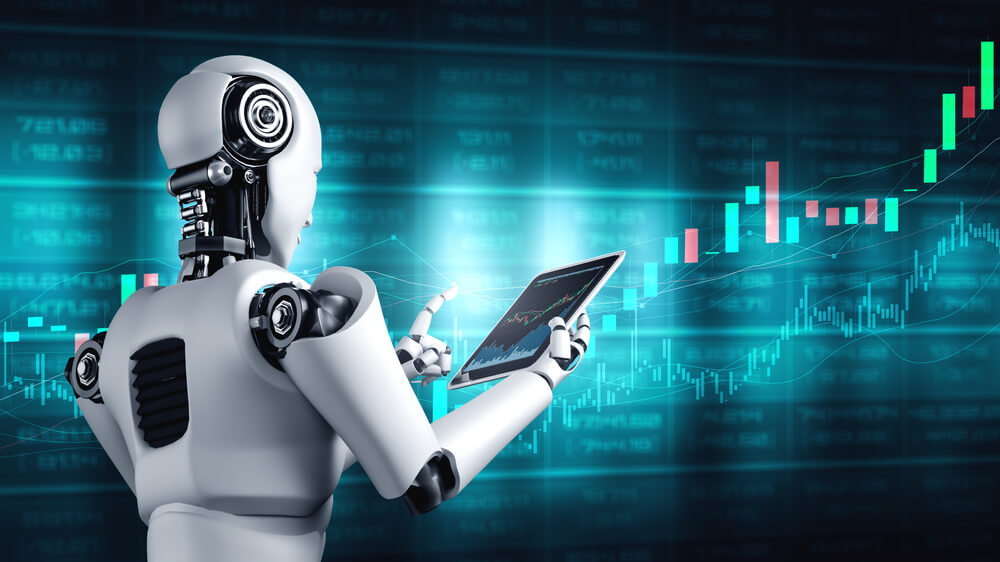
Types of Forex Trading Robots
Currently, several types of Forex trading robots are available to market participants. The most trendy ones are listed below:
- Martingale advisors. As it comes from its name, this category of Forex trading robots is based on the Martingale system, which suggests doubling the position size each time a loss occurs. This is a very disputable method that may lead to both high gains and substantial losses;
- Short-term types of Forex trading robots. The category includes several algorithmic systems designed to capitalize on small price fluctuations. These Forex trading robots use scalping and intraday strategies and require a more careful approach when it comes to setting their risk and money management rules;
- Trend automated systems. The name of this type of Forex trading robot suggests that they catch both major and minor trends to find entry points. They are based on various technical indicators and drawing tools when identifying the current price movement direction;
- Indicator robots. Unlike the previous category, this category includes only paid and free trading robots for MetaTrader 5 and other platforms based on technical indicators. Also, such automated trading systems can be used for the trend, counter-trend, and range-bound trading depending on the tools they are based on;
- Non-indicator robots. Last but not least comes a collection of automated systems that uses various drawing tools to identify current market patterns.

Indicators Used in Algorithmic Trading
Most of the existing automated systems use the most popular technical indicators. Some of them include:
- Moving averages. This technical indicator calculates the average price of a security over a specified period and smoothes price fluctuations. Moving averages are among the most straightforward technical analysis tools that can be found in a lot of types of Forex trading robots;
- Relative Strength Index (RSI). This momentum oscillator measures the speed of changes in price movements. Ranging from 0 to 100, the Relative Strength Index (RSI) identifies two critical zones: overbought (generally above 70) and oversold (below 30). The RSI is designed to detect potential market corrections or full-fledged reversals in price trends;
- Bollinger Bands. This trend indicator illustrates the current price movement direction and measures the asset’s volatility. Bollinger Bands is based on the simple moving average that smoothes price fluctuations and two bands that enclose the quotes;
- Average True Range. Reliable trading robots often use the ATR indicator to identify the strength of a particular directional price movement. Moreover, the indicator will be useful in determining the size of stop loss and taking profit orders.
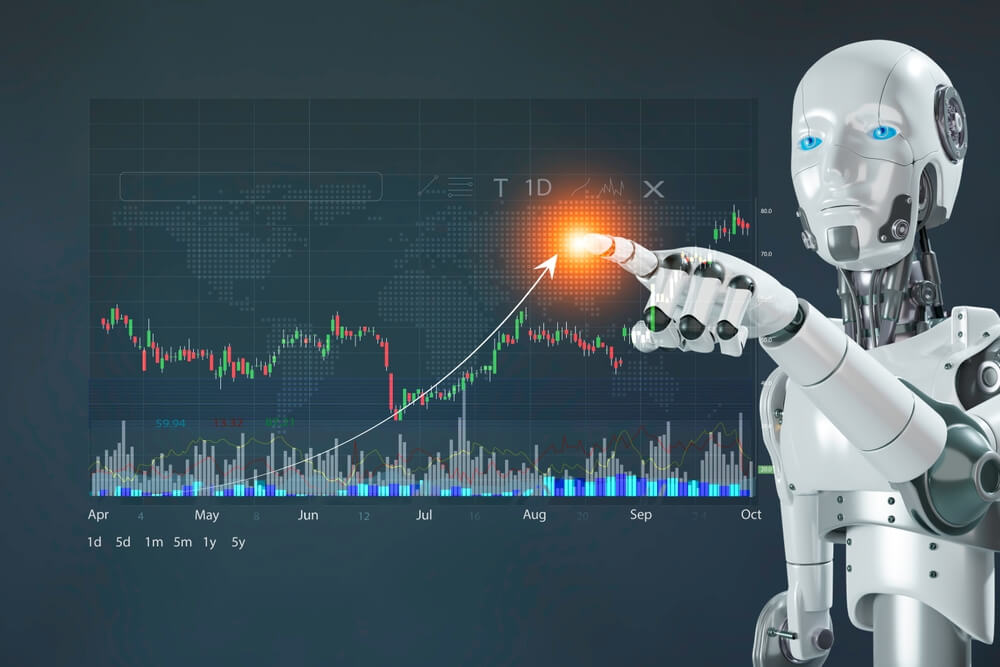
Benefits of Algorithmic Trading
Market participants can significantly improve their results when using paid or free trading robots. Some of the key benefits of trading with such bots are the following:
- Elimination of human error. Unlike human traders, automated systems follow the rules without deviating from the steps described in their code. Therefore, such algorithms avoid risks of human error;
- Speed. Forex trading robots can open trades at a speed no human can match. This allows market participants to catch all possible opportunities when using such systems;
- Around-the-clock market monitoring. Adding algorithmic trading into one’s trading routine will allow a trader to open positions 24/7 without monitoring the charts on their own;
- Elimination of emotional biases. Human traders often make emotion-driven decisions that may ruin their trading results. Algorithmic trading, in turn, eliminates the impact of emotions on trading decisions.
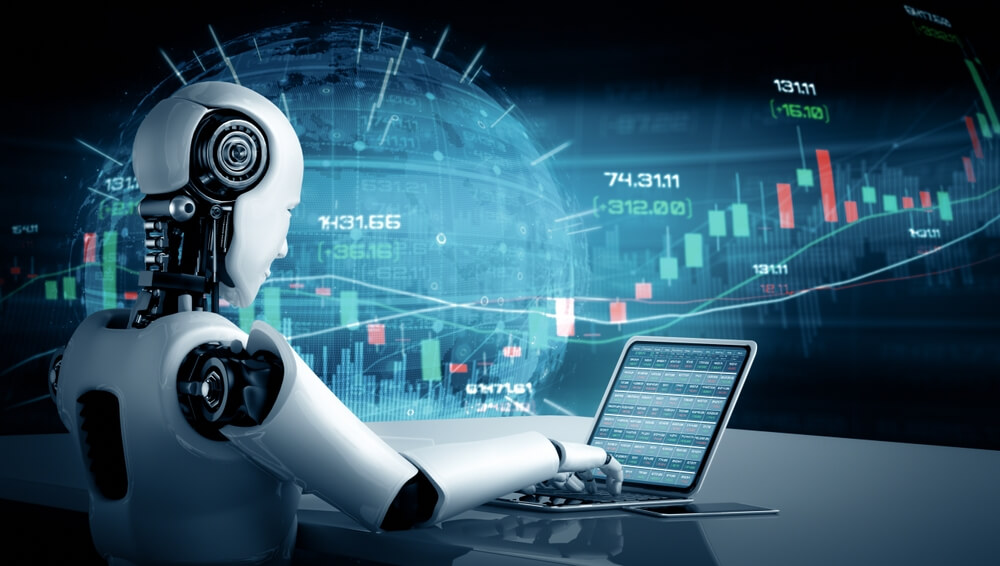
Algorithmic trading offers substantial benefits in terms of speed, efficiency, and consistency. By removing human error and emotional biases, automating intricate trading strategies, and implementing robust risk management protocols, algorithmic trading significantly enhances the potential for successful trading outcomes.
Whether for institutional investors or individual traders, algorithmic trading promotes disciplined and profitable trading practices. AMarkets provides traders access to a variety of free trading robots, catering to different trading styles and preferences.
FAQ
What Are Forex Trading Robots?
Forex trading robots are automated software programs designed to execute trades in the foreign exchange market without human intervention. These robots use pre-set algorithms and trading strategies to analyze market data, identify trading opportunities, and execute buy or sell orders.

How Do Trading Robots Work?
Trading robots use pre-programmed algorithms to analyze market data and execute trades automatically. They continuously monitor financial markets, identifying trading opportunities based on specific criteria such as price movements, technical indicators, and trading signals.
How to Use Trading Robots?
To use trading robots, a trader should select a compatible trading platform like MetaTrader 4 or 5 and install a chosen robot (with AMarkets, a market participant can choose from dozens of bots for free). The next step is configuring the robot’s settings to match the trading strategy and risk tolerance. Before letting a bot trade on a real-money account, one should test it on a demo to evaluate its performance.

